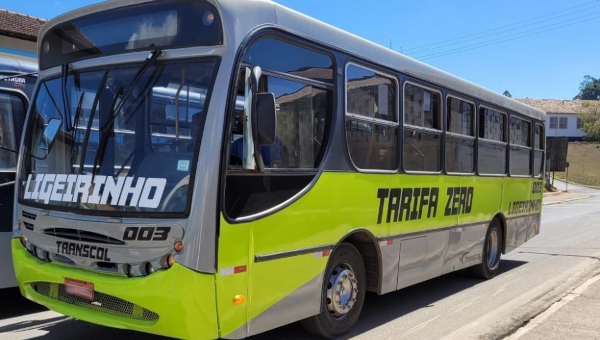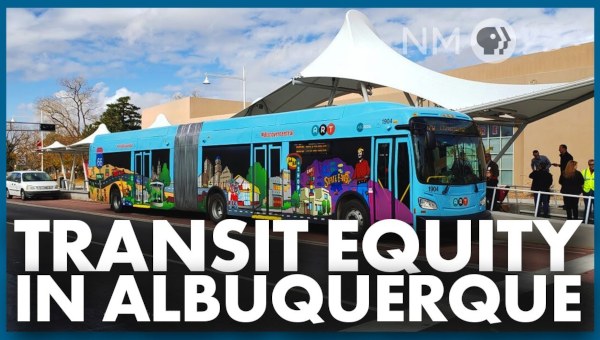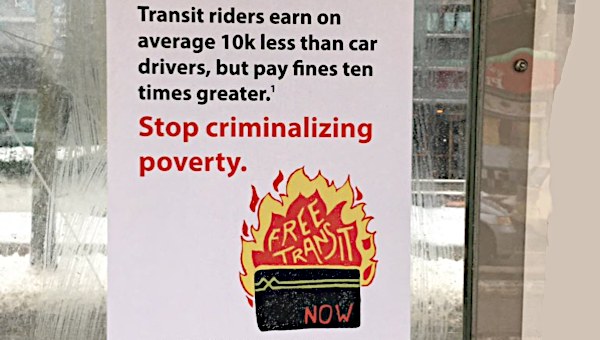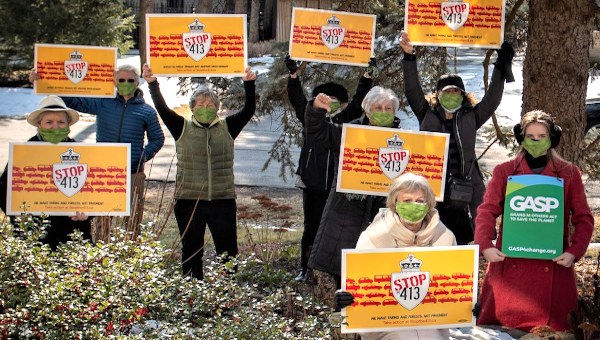Toward A Red-Green Vision for Toronto
Transit is a critical issue for people in Toronto, as in all major urban areas. More is at stake than reducing traffic congestion and gridlock. Transit and general mobility are intimately related to larger issues in capitalist society: how goods and services are produced and delivered; the location of and nature of jobs; where and how we live and travel; issues of class, inequality and oppression related to race, age, gender, and sexuality; climate justice; and the very shape and nature of our democratic institutions.
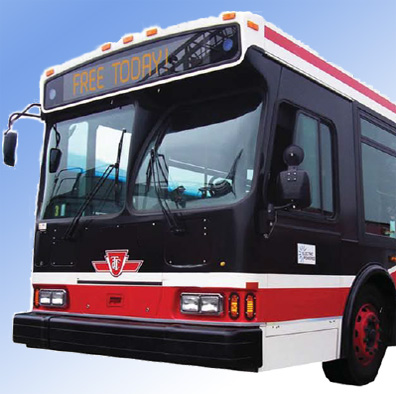
The GTWA Free Transit initiative opens the door to a broader transformation of urban life and the current social system. Our ‘Red-Green’ vision is socialist, based on the working-class, environmentally just, internationalist, and transformative.
Promises and Challenges of Free Transit
Our Free Transit model makes public transit a right of all people, which would dramatically increase its use. While serving the vast majority of Torontonians and strengthening the public sector’s role in meeting their needs, it would also address the special mobility requirements of the least mobile and most public transit-dependent: people with disabilities, people working in precarious jobs and/or living in poverty, plus the more elderly and younger members of our community.
Demanding Free Transit poses key questions:
- How can Free Transit help transform our car-dominated transit system?
- How would it be financed?
- How would it challenge government austerity and fight for good green jobs?
- How much would Free Transit support global climate justice?
- How can transit users and transit workers together push for Free Transit?
- Could Free Transit networks be generous public spaces that express the full diversity of our city without discrimination?
Mobility and Time in the City
Mobility is more than the ability of people to travel where they want or need to. People who have to take transit to precarious jobs, juggle two or more jobs, and/or balance household and work tasks (usually women), have different transit needs than the wealthy. For many people, reduced need to travel could be as important as the right to move around the city.
Addressing this means planning and reordering the location of work, home, and recreation. It means changing the structure of work, including fighting against precarious work, and involves reorganizing gendered patterns of living and working. In other words, mobility should become a social choice that qualitatively improves workers’ everyday lives while reducing environmental degradation.
Building a Compact City
“Transit-oriented development” is taken to mean combatting sprawl by intensifying residential development, along with providing walkable, street-oriented, mixed-use built environments. This can produce the population densities that make mass public transit feasible.
As neutral or positive as this seems, it has problems. Intensification in Toronto is mostly in the form of private real estate development, usually of high-rise condominiums. This leads to increasing land costs that threaten low-rent apartments, cheaper shops and industrial spaces. All these displace working-class people to the suburbs, reinforcing sprawl.
Our approach calls for compact, land-saving and energy-efficient building. This would require public land ownership and social housing that is collectively or co-operatively owned and managed.
Public Space in the City
Even publicly owned transit networks can be socially divided and less than public in practice. New lines sometimes cater to privileged elites (such as the diesel train link from Union Station to the airport), are built and maintained via “public-private partnerships” (Toronto’s new LRT network), or bypass areas where working-class people live, especially people of colour or on social assistance.
Transit must not reinforce current patterns of segregated living. It must also fully accommodate people with disabilities and special needs. In sum, Free Transit should provide a fully public space, where people have the right to engage with one another and feel comfortable doing so, in the spirit of the world’s most congenial public spaces.
The Scale of our City
Free Transit – and complementary industrial strategies – would require greater integration of neighbourhood and commuter transit, and of those with national rail networks. This would strengthen transit at all levels. Current commuting flows (such as GO Transit) are out of joint with urban travel; they actually encourage individual, short-term car trips and undercut necessary city densities.
We need to integrate what remains of Canada’s passenger rail grid, inter- and intra-regional and local transit networks, and co-ordinate them with improved cycling and walking infrastructure. All this needs to be extended to and integrated with inner and outer suburbs. Current forms of regional integration are business-dominated, undemocratic and underfunded. Ontario’s Metrolinx agency in particular is invested in privatizing public transit in the GTA.
Addressing Twin Crises: Environment and the Economy
Free Transit would necessitate shifting away from private transport, which creates 25% of global carbon emissions. That shift would make a major contribution to reducing our greenhouse gas pollution, which in turn would have benefits around the world. Public mass transit produces 5–10% of the greenhouse gas levels of autos, and consumes much less land than does car dependency.
The current economic crisis, although seen by business and governments as helpful for imposing unpopular austerity, provides an opportunity for ecological and economic reconstruction. A Red-Green economic development strategy, with mass public transit as a key component, can build on workers’ and environmentalists’ fights against plant closures, such as Toronto’s Green Work Alliance in the 1990s, the Greater London (England) Council experiments in the 1980s, and new proposals in the United States.
The investment necessary for Free Transit is a major opportunity to promote social and ecological development. The public sector could become a strategic lynchpin for developing urban infrastructure, in the process creating green jobs and implementing an industrial strategy centred on retrofitting ailing manufacturing plants, generating new forms of sustainable energy, building non-profit housing on government-assembled land, land trusts or co-operatives, and providing new forms of public service.
Changing Our Use of Cars
Toronto needs to radically decrease the dependence on private vehicles that has been structured into our living and working lives since the mid-20th century. On its own, Free Transit would not end car dependence. Doing that would require not only dramatic increases in transit capacities, but also measures to transform the way we use cars today.
Such changes will need to be carefully thought through, and will have to include recognizing that people cannot easily cease depending on cars and preclude penalizing working-class people for whom switching modes of transportation is not an immediate option.
Solutions will include intensifying and expanding transit in currently transit-poor areas of the city and in newer suburbs, at the same time making development contingent on transit access. Limits on the times and places of car usage and parking in the city will be needed, while priority is given on many routes to pedestrians, cyclists and transit.
Public Ownership and Democratic Planning
Free Transit can only happen if transit is fully public in ownership and operation – it is not compatible with private-sector logic. But public-sector bureaucracies and even unionized workers may think this demand threatens the financial viability of public transit. Achieving it will require a strong alliance among public transit workers and their unions, transit users and all supporters of robust and expanded public transit. The goal is not to make public managers more powerful, but to democratize planning and administration by empowering transit workers and users.
Free Transit is in the medium- and long-term interest of transit workers. It would end fare-policing, a major source of tensions between transit workers and users; lead to increased transit employment; and raise transit workers’ importance and prestige in users’ lives.
Democratic planning must be introduced, from local neighbourhoods through to high-level co-ordination and planning. Regional and inter-regional transit needs can also be articulated from below, by creating regional democratic planning bodies that are mandated to improve transit – not to take resources from transit-dependent but underserved areas (such as inner suburbs) or transit-dense areas (such as downtown).
Paying for Free Transit
Current budgetary practice makes it difficult to pay for Free Transit. In Toronto, massive public funding would be needed to replace the current 70% of operating costs paid by fares and to build new transit capacity. The Ontario government would have to reverse its Harris-era downloading of operating support to municipalities with limited taxing ability.
Both Ontario and federal governments need to provide the funding that is recognized around the world as essential for any successful transit system, free or not. Even free public transit can be cheaper than the costs of building road and other infrastructure for cars. Ending state subsidies (such as building highways at public expense) to privatized transport and land development would, of course, challenge vested interests such as construction, development, finance, media and auto-related industries.
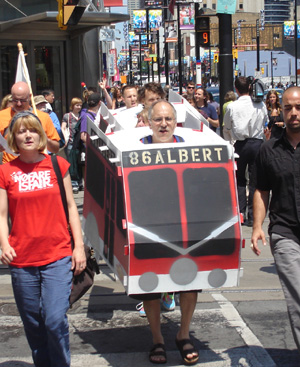
Increasing federal and provincial funding of mass public transit with stable and generous formulas, while ending the hidden subsidies to these vested interests, would make it possible to fund free transit without increasing municipal taxes. This would not preclude a new tax structure to support the transformation of our city, such as new taxes on gas, carbon and parking, and certain tolls, congestion fees and luxury taxes.
Of course, as part of a progressive taxation system, we should all be prepared to be taxed for a basic public service like free transit, recognizing that this will leave us far better off than having to pay the increasingly regressive and unsustainable fares we now do. Even occasional transit users – motorists and cyclists for instance – can view their role in such a system of taxation as ultimately beneficial, as funding a more usable and sustainable public transportation network is essential to creating a sustainable and livable city for us all.
How to Get There
The Free and Accessible Transit Campaign proposes the following steps toward Free Transit:
- Freeze all fares, and embark on a plan to gradually reduce them.
- Prioritize eliminating fares for seniors, people on social assistance and the unemployed. Start with lowering fares, and eliminate them during non-peak hours.
- Suspend fare collection during extreme weather alerts (cold and hot).
- Maintain full public ownership of all transit services, stock and maintenance. No private contracts (such as P3s) that distort the goals of public transit!
- Create neighbourhood-based, short-distance public transit to link people lacking access to the main urban network.
- Replace Metrolinx with a democratic planning body.
In Toronto, the movement to defend and expand public mass transit includes the Fair Fare Coalition, Scarborough Transit Action, Public Transit Coalition, Clean Train Coalition, and TTCRiders. Along with the city’s working-class movement and climate justice advocates, the Free and Accessible Transit Campaign can create a sorely needed critical pole of reference for Toronto and Canadian politics – and achieve Free Transit. •
For more information about the Greater Toronto Workers’ Assembly (GTWA) and the Free and Accessible Transit Campaign visit gtwa.blogspot.ca.


